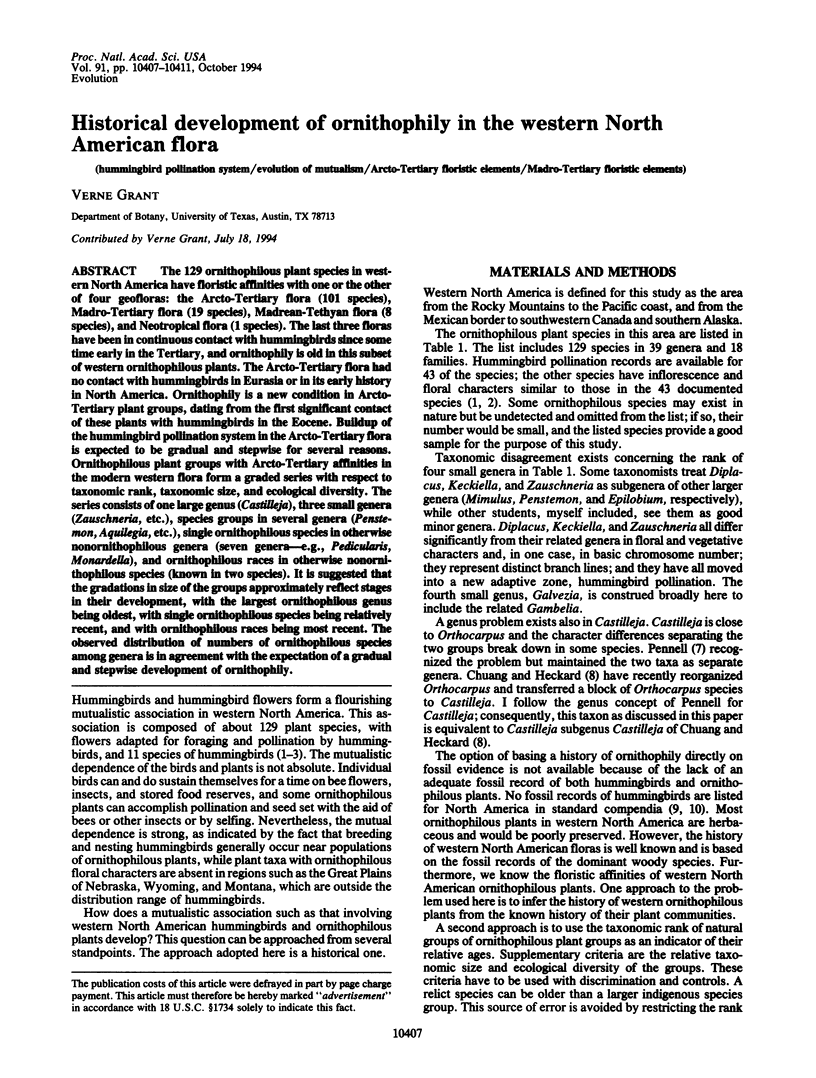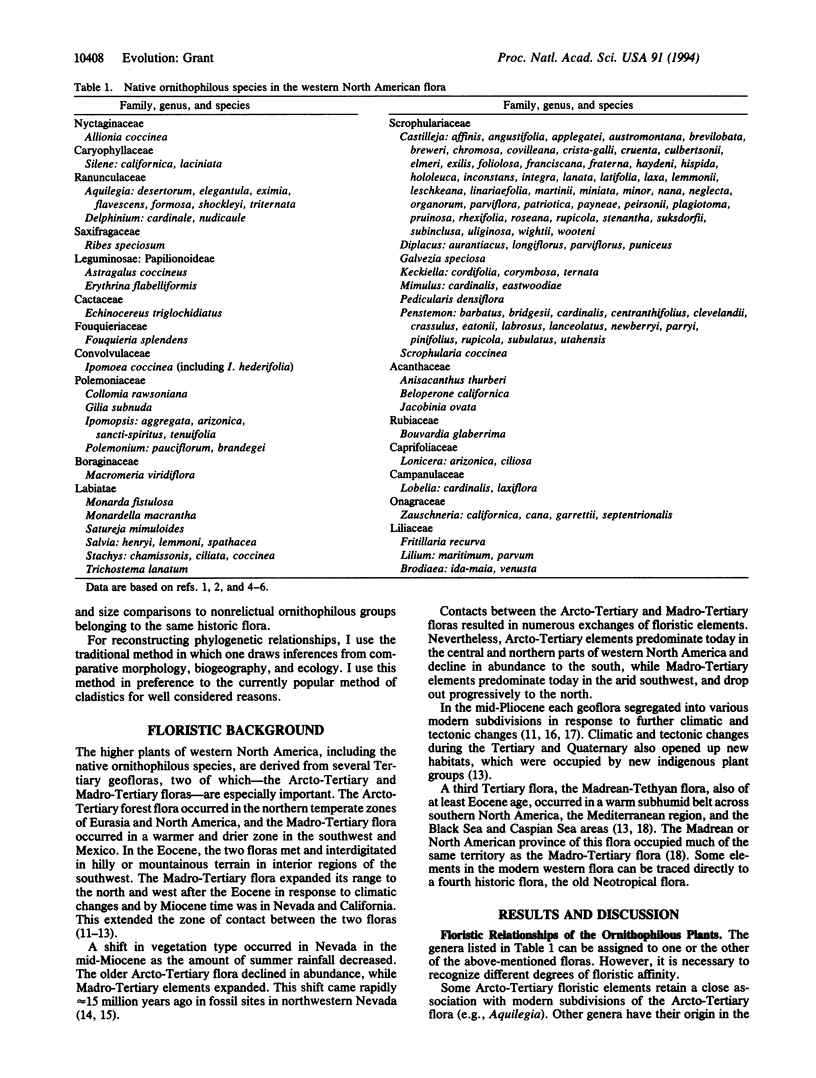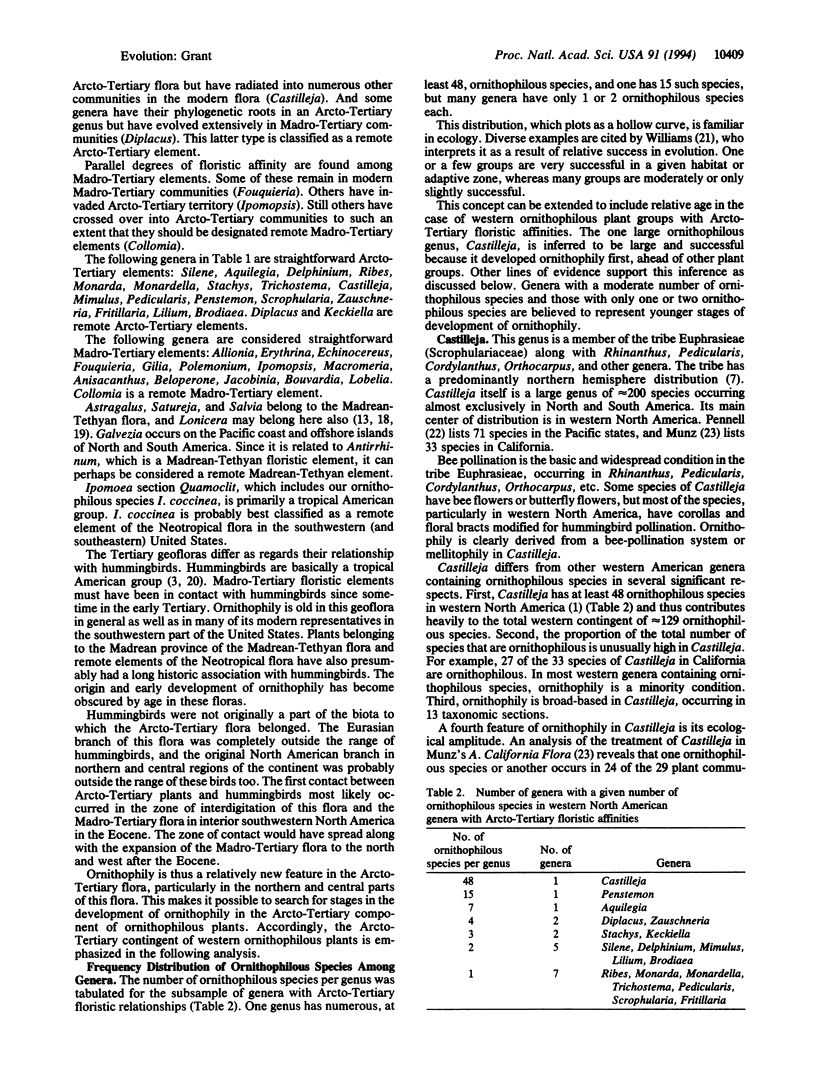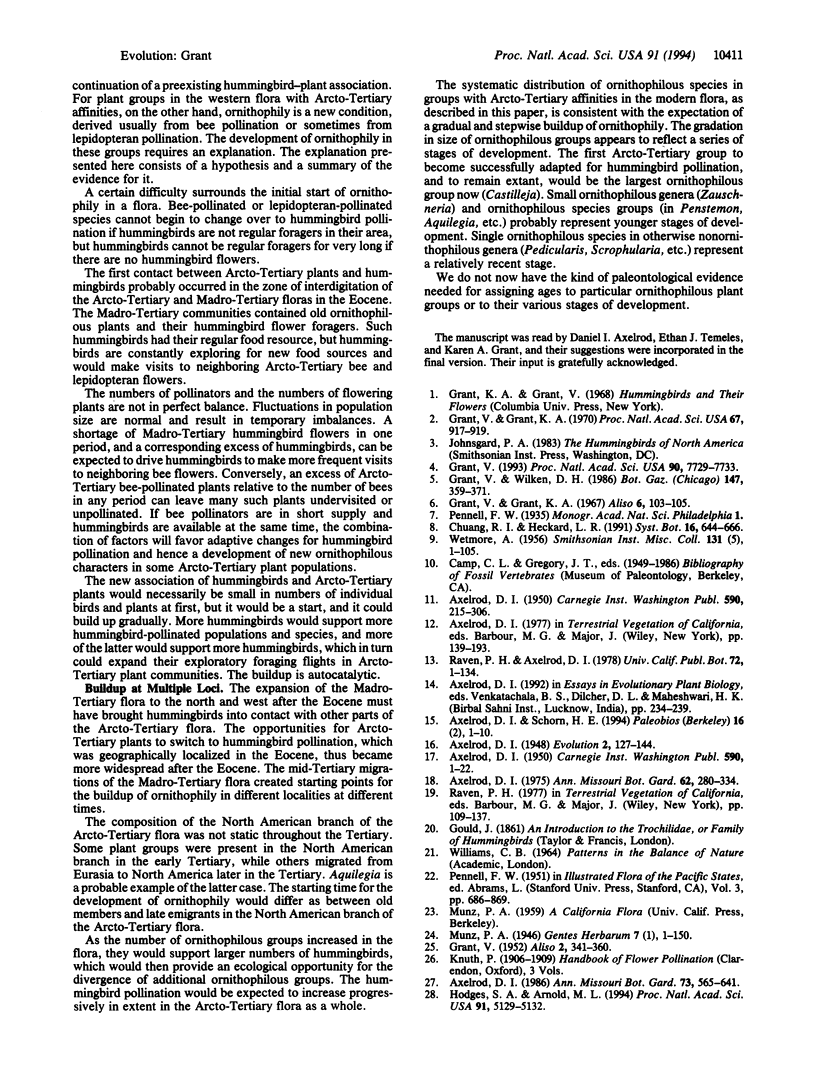Abstract
The 129 ornithophilous plant species in western North America have floristic affinities with one or the other of four geofloras: the Arcto-Tertiary flora (101 species), Madro-Tertiary flora (19 species), Madrean-Tethyan flora (8 species), and Neotropical flora (1 species). The last three floras have been in continuous contact with hummingbirds since some time early in the Tertiary, and ornithophily is old in this subset of western ornithophilous plants. The Arcto-Tertiary flora had no contact with hummingbirds in Eurasia or in its early history in North America. Ornithophily is a new condition in Arcto-Tertiary plant groups, dating from the first significant contact of these plants with hummingbirds in the Eocene. Buildup of the hummingbird pollination system in the Arcto-Tertiary flora is expected to be gradual and stepwise for several reasons. Ornithophilous plant groups with Arcto-Tertiary affinities in the modern western flora form a graded series with respect to taxonomic rank, taxonomic size, and ecological diversity. The series consists of one large genus (Castilleja), three small genera (Zauschneria, etc.), species groups in several genera (Penstemon, Aquilegia, etc.), single ornithophilous species in otherwise nonornithophilous genera (seven genera--e.g., Pedicularis, Monardella), and ornithophilous races in otherwise nonornithophilous species (known in two species). It is suggested that the gradations in size of the groups approximately reflect stages in their development, with the largest ornithophilous genus being oldest, with single ornithophilous species being relatively recent, and with ornithophilous races being most recent. The observed distribution of numbers of ornithophilous species among genera is in agreement with the expectation of a gradual and stepwise development of ornithophily.
Full text
PDF




Selected References
These references are in PubMed. This may not be the complete list of references from this article.
- Grant V., Grant K. A. A hummingbird-pollinated species of boraginaceae in the Arizona flora. Proc Natl Acad Sci U S A. 1970 Jul;66(3):917–919. doi: 10.1073/pnas.66.3.917. [DOI] [PMC free article] [PubMed] [Google Scholar]
- Grant V. Origin of floral isolation between ornithophilous and sphingophilous plant species. Proc Natl Acad Sci U S A. 1993 Aug 15;90(16):7729–7733. doi: 10.1073/pnas.90.16.7729. [DOI] [PMC free article] [PubMed] [Google Scholar]
- Hodges S. A., Arnold M. L. Columbines: a geographically widespread species flock. Proc Natl Acad Sci U S A. 1994 May 24;91(11):5129–5132. doi: 10.1073/pnas.91.11.5129. [DOI] [PMC free article] [PubMed] [Google Scholar]


